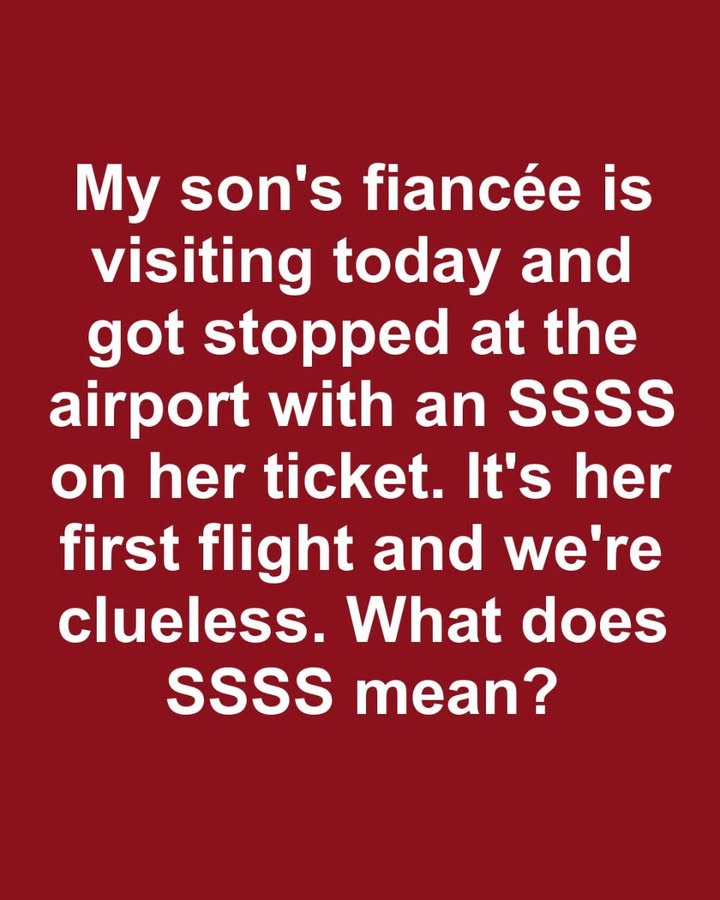Many travelers are unaware of the SSSS code that can suddenly appear on their boarding pass until they encounter it firsthand at the airport, often leading to confusion, concern, and a significant delay in their journey. This unexpected label, which stands for “Secondary Security Screening Selection,” may look like a random string of letters at first, but it carries important implications for the travel experience.

It signals that the Transportation Security Administration (TSA) has selected the individual for enhanced screening procedures before boarding their flight. For first-time flyers or those unfamiliar with airport protocols, this designation can be surprising and even intimidating, but knowing what it means and how to handle it can ease much of the anxiety associated with it. Essentially, when you see SSSS printed on your boarding pass, it means you’ll undergo a more in-depth security process than the average passenger. This typically includes additional pat-downs, closer examination of your carry-on luggage, thorough checks of electronic devices, and sometimes swabbing for traces of explosive materials. There may also be extended questioning at the security checkpoint, all of which are part of TSA’s efforts to maintain high safety standards for air travel.
While the extra attention can feel invasive or excessive, it’s important to recognize that this process is not a personal accusation or punishment—it’s a security measure meant to protect everyone. The reasons why someone is flagged with SSSS can vary widely. Sometimes it’s purely random, part of a rotating security process to ensure unpredictability in screenings. Other times, it may be triggered by certain travel behaviors, such as purchasing a one-way ticket, booking a flight at the last minute, making multiple international trips in a short timeframe, or inconsistencies in documentation.
Even seemingly minor changes to a traveler’s itinerary can prompt the designation. Regardless of the reason, it does not imply that the passenger is guilty of any wrongdoing; it simply places them under extra scrutiny to ensure all bases are covered from a security perspective. If you are marked with SSSS, you should prepare for a longer security experience at the airport. Passengers are usually directed to a separate line where TSA agents will conduct a detailed review of identification and travel papers, followed by a physical inspection of personal belongings and possibly body screening. These checks may take extra time and might even feel excessive, but staying calm, polite, and cooperative can help make the process smoother and quicker.
Since the SSSS designation can extend your time at the airport, it’s highly recommended to arrive earlier than you normally would, allowing for these extra measures without jeopardizing your flight. While it rarely causes passengers to miss their flights, not planning for it could increase stress and complicate tight connections or layovers. Being mentally and logistically prepared will help you move through the process with greater ease. For travelers who experience this screening more than once or frequently, there are a few preventative measures that may reduce the likelihood of future SSSS designations. Keeping all booking and identification information accurate and consistent, avoiding last-minute travel changes when possible, and enrolling in programs like TSA PreCheck or Global Entry may help flag you as a lower-risk traveler. These programs expedite security clearance and may reduce the chance of receiving additional scrutiny, although there is no guaranteed method to avoid the designation entirely. Understandably, travelers often have questions after receiving an SSSS code, wondering why they were selected and whether it will impact future travel. Unfortunately, because the system incorporates both random elements and security algorithms, it’s difficult to predict or explain individual selections. Some passengers may be concerned about privacy or feel unfairly targeted, but TSA maintains that the process is governed by impartial security protocols, not personal data profiling. Travelers are encouraged to ask TSA personnel respectfully if they have concerns, although agents may not be able to provide specific explanations. In the end, the best approach is to view the SSSS code not as a punishment but as a safety precaution. Learning about it in advance, preparing accordingly, and maintaining a calm, cooperative attitude can make a world of difference. Travel is full of surprises, and while this particular one may be less than ideal, being informed helps transform the experience from a source of stress into a manageable part of your journey. Ultimately, these security measures exist to protect all passengers, and approaching them with patience and understanding ensures a smoother process and a more peaceful trip overall.





